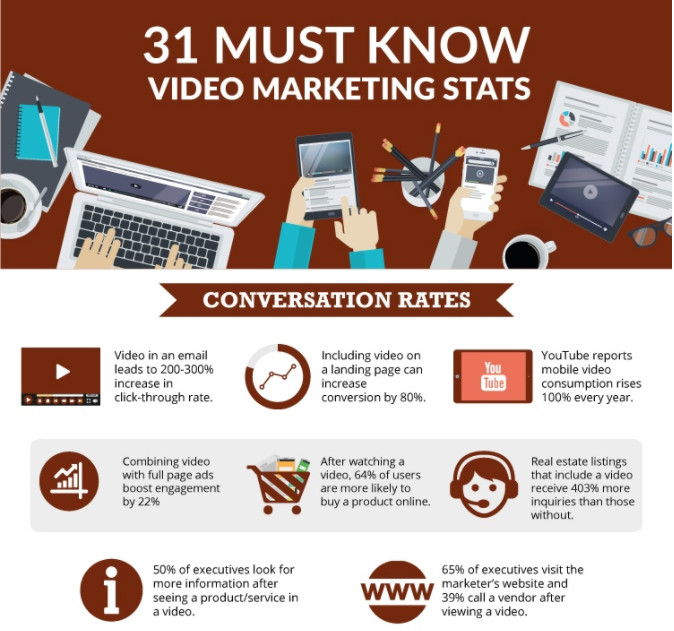5 Mistakes Companies Make When Using Video
Jayframe Media | Content MarketingMany businesses believe that to succeed in video marketing, they need to produce high-budget, high-production videos.
This belief leads to wasted time and money on overly complex video projects, leaving marketers and business owners frustrated and under pressure.However, as a content creator and digital marketer with 8 years of experience, I’ve seen firsthand how simpler, strategic videos can outperform expensive productions. The key to successful video marketing lies not in the budget but in authenticity, personalisation, platform optimisation, and diverse use cases.
As a content creator and digital marketer with many years of experience, I understand the challenges and pressures that come with video marketing. I’ve worked with numerous startups and small businesses, helping them navigate the complexities of creating effective video content. Through my journey, I’ve seen firsthand how simple, strategic videos can often outperform high-budget productions.
In my career, I’ve learned that the key to successful video marketing isn’t about having the most polished, expensive video. Instead, it’s about understanding your audience, delivering authentic and relevant content, and leveraging the strengths of each platform. By focusing on these principles, I’ve helped businesses create impactful videos that drive engagement and sales without breaking the bank.
Video marketing can be a game-changer for startups and small businesses, but many fall into the trap of thinking they need a Hollywood-level production to make an impact. In reality, successful video marketing is more about strategy than budget. By focusing on authenticity, personalization, platform optimization, and exploring various use cases, businesses can create effective videos that resonate with their audience and drive results. Here are five key strategies to help you make the most of your video marketing efforts.
Video is without a doubt a powerful tool for a company to have in their marketing arsenal. One-third of all time spent online is spent watching video.

1. Avoiding Overproduction
High-quality videos do have their place, particularly on home pages where first impressions matter. However, authentic, simple videos often perform better in other contexts. Audiences appreciate genuine content that feels relatable and trustworthy.
Examples:
- Casual, off-the-cuff videos: These can include customer testimonials or behind-the-scenes looks, which can be recorded with a smartphone. These types of videos are engaging and feel more personal.
- Success Story: Slack’s customer testimonial videos feature talking heads filmed at their desks, showcasing real users in real situations. Despite their simplicity, these videos effectively highlight the value of Slack’s communication tools.
2. Ignoring the numbers that matter
Views are a vanity metric that can be misleading. It’s essential to track metrics that provide insight into viewer behavior and how videos impact leads and sales.
If you’re not tracking how views actually impact leads and your sales, it’s impossible to tell whether your investment in video is paying dividends. The good news is that video analytics technology can now dig much deeper into your viewer’s behaviour.
Brands can now see which parts of videos people are actually watching, monitor click-throughs to their site and even integrate directly into sales, analytics or marketing software. Using tools like Vidyard, Loom and the latest integrations from Google and Microsoft means you can create, send and track personalised videos directly to your customers. With the advantage of seeing exactly when you loose there attention, when they click away or click through. The sales dream of being able to attribute every dollar spent on marketing to an actual sale is getting closer to a reality, at least on the video front.
3. Not Personalising Videos
Personalising videos for a specific audience has been shown to be one of the most effective approaches to draw in viewers. Although it may seem tedious at first, the process is becoming simpler and the benefits outweigh the time commitment.
Customising only the opening frames of a video is a straightforward way to let recipients know the video is meant particularly for them. This is similar to how the recipient’s name was added to form emails in the past, but the video format keeps this method unique and innovative. Simply putting your target’s name in the title or holding up a whiteboard with a private message can enough, after which you can set these frames as your thumbnail.
4. Not optimising for platforms
When it comes to marketing, most brands have gotten used to using many platforms. using social, digital, and conventional media for various purposes. However, this same level of savvy just isn’t being applied to video. Great videos are frequently posted online in a way that completely overlooks the unique capabilities of each platform.
YouTube should be welcomed due to its tremendous potential for search and discovery as well as the associated SEO boost. Longer videos logically belong there. Facebook and Twitter work well for short, memorable videos because of their auto-play function, which can draw viewers in.
The fact that it can take some time to upload to several networks and can be hard to create is a major obstacle here.
5. Not Exploring Various Use Cases
A fun video that advertises your company, such as the one that made Dollar Shave Club widely recognised, is unquestionably a useful tool. However, many businesses fail to consider the ways in which video might benefit them beyond mass marketing.Quick-and-dirty videos are a great way to introduce yourself to a new client, offer support to clients, or even share internal communications from the CEO with the team. Moreover, these videos perform just fine without having to “go viral.”
Ultimately, the most important thing to keep in mind about video is that it should be directly contributing to revenue rather than just serving as a “awareness” play. For example, it can be considerably more efficient to reach 100 real prospects than a million people with a film that doesn’t generate sales. Therefore, forget about going viral. Successful video marketing is about attracting quality leads, not quantity,

